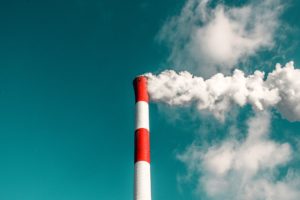A growing number of foundations are deploying a portion of their capital to mission aligned investment strategies. This is an important trend. Still, only a relatively small number of foundations seek positive environmental and social impact with their investments and often with only a small share of their corpus. A recent US study found that only 7.5 per cent of the total $908 billion of foundation assets under management apply one or more environmental or social criteria to their investments. It also identified only 59 foundations that applied criteria across more than 50 per cent of their endowments. Most opted instead for a small carve-out for mission alignment or they failed to apply any criteria at all.
Why are more foundations not joining the mission investing trend or deploying a greater share of their assets? In today’s complex global economic system, financial institutions and corporate actors directly shape environmental and social conditions. As investors, we seek to benefit from those systems and we literally own a share of the companies that we invest in. We therefore have some degree of accountability for their impact.
Advocates for mission investing have typically framed their arguments for applying social and sustainability criteria as an opportunity. We can use our investments to seed innovation, scale solutions, or build economic opportunity for communities, where finance is another tool in our toolbox. Yet very few foundations today have a theory of change about their investments and how they might contribute to their objectives. Why?
Perhaps we are just not having the right debate. Instead of only asking how we can we have positive impact, we might instead inquire if we are driving harm with our traditional investment practices and our corporate holdings. Are we violating our fundamental mission to serve the public good for which we receive charitable tax status?
Are we contributing to the problems we ask our grantees to solve and are we leaving money on the table that could help in achieving our strategies?
Are our investments contributing to climate change, driving inequality, violating women’s rights, or fuelling a system of financial secrecy which allows investors to escape paying taxes or hide corruption? Framed as avoiding harm, philanthropy might feel a greater urgency and sense of responsibility to scrutinise our investments. Simple surveys of potential harm might expose whether our investments actually undercut the work of our grantees who seek to solve social and environmental ills . Mission alignment would be seen, first, as a way to reduce our inconsistencies and our vulnerability if publicly exposed. Many foundations have already been subjected to exposes about investments in dirty companies and human rights violating industries, while funding organisations that fight them. Once we assess our potential harm, we can then begin to examine the opportunity for positive impact alongside our grants.
The firewall between the programme and investment staff is a very real barrier to even having the debate. Too often the investments are managed on a different side of the office or in a different office altogether, by a specialised team with typically only traditional financial skills, and receiving little input from the programme or issue experts. It is ultimately up to the foundation Presidents and Trustees to call the question. Are we contributing to the problems we ask our grantees to solve and are we leaving money on the table that could help in achieving our strategies?
 If you own fossil fuels, you own climate change
If you own fossil fuels, you own climate change
Perhaps nowhere is this potential harm more dramatically clear than with the issue of climate change, whose impacts threaten the mission, programmes and grant recipients of every foundation chartered today. The world faces a climate emergency with little over a decade left to dramatically reduce emissions to keep the planet below catastrophic levels of warming. It is increasingly untenable for any investor – let alone one whose highest mission-level duty is to serve society, as is the case with foundations – to own stocks in the companies that drive the crisis, refuse to tender business plans that align with a1.5 degree warming cap, and continue to lobby governments for inaction.
By committing to divest from fossil fuels and invest in climate solutions, philanthropy is both reducing its climate and pollution impacts and helping to scale urgently needed solutions.
Conversely, we need to switch to renewable energy quickly to enable the energy transition. This requires capital, alongside government intervention. It has been estimated that every investor should put five per cent of their portfolio into climate solutions to scale in the timeframe required to get off fossils. Mission investors could play a particularly crucial role by also investing in communities who may be excluded by plans to adopt large-scale renewable energy, like those in rural areas that don’t have electricity today who might be lifted out of poverty and whose lives might be transformed by the energy transition.
It is no surprise that many publicly traded companies and private equities have faced scandals for violations of human rights in their supply chains, extreme gender pay inequity, labour violations, and corrupt dealings with dictatorships.
By committing to divest from fossil fuels and invest in climate solutions, philanthropy is both reducing its climate and pollution impacts and helping to scale urgently needed solutions. Today, nearly 200 foundations have made the pledge to ‘divest-invest’, a remarkable level of collaboration on investment strategies, yet utterly inadequate when compared to the thousands of foundations in existence today and the dire threat posed by climate change.
 Hedging inequality?
Hedging inequality?
Climate, pollution and fossil fuels are not the only harm that lurks in nearly every portfolio. Most foundations are invested in funds that hold companies whose complicated global registration is designed to escape taxes or, in other words, starve governments of revenues that can fund social programmes, alleviate poverty and reduce inequality. Many foundations are invested in hedge funds that may be registered off shore to reduce tax burdens, while escaping scrutiny for their often risky and sometimes illegal holdings. Apart from questions of transparency, such investments are seen as ‘giving life to an institutional arrangement which is basically nefarious and bad for our global society,’ according to economist and Nobel laureate Joseph Stiglitz of Columbia University[1]. (The risk of corruption and the desire for greater transparency has led our foundation to get out of all hedge funds.) The publication of the Paradise Papers proved embarrassing for a number of large foundations that were investing in hedge funds in the Cayman Islands with significant holdings in some of the dirtiest fossil fuel companies[2].
A growing body of academic research and a slew of recent studies by independent non-profits show that you do not have to sacrifice returns by investing sustainably and responsibly.
It is no surprise that many publicly traded companies and private equities have faced scandals for violations of human rights in their supply chains, extreme gender pay inequity, labour violations, and corrupt dealings with dictatorships. Some of these violations cannot be predicted in advance, but companies that adhere to Environmental, Social and Governance (ESG) standards are far less likely to run foul of international human rights standards, gender-based abuses, corruption, and polluting communities and ecosystems.
What about the money?
Today, over $12 trillion in assets under management are ESG-integrated, this is no longer a cottage industry. A growing body of academic research and a slew of recent studies by independent non-profits show that you do not have to sacrifice returns by investing sustainably and responsibly. ESG-screened indexes have been outperforming their benchmarks for 28 years on a risk-adjusted basis. The Wallace Global Fund began its journey with mission investing in 2009 and has been fully ESG-integrated across the whole investment portfolio since 2012, is fossil fuel free with over 15 per cent invested in climate solutions, has rigorous gender and human rights criteria, and a carve-out for highly transformative impact investments designed to advance women’s empowerment and community development with a fair rate of return.
Once we broke down the wall between investments and grantmaking, new levels of creativity were unleashed.
The portfolio has beaten its financial benchmarks each year by substantial margins ever since, including 21.6 per cent returns in 2017. Given the threats to democracy and climate worldwide, the board decided to put those returns back into grantmaking in 2018, doubling our programme budgets. Ethically, we did not feel that we could grow our endowment with so much at stake and so many organisations needing greater capacity to respond.
To be clear, we are committed to environmental and social impact alongside our financial returns. We recognise that the values of short-termism and shareholder primacy inherent the modern financial system are driving unsustainability and dangerous economic instability. But we are getting high financial performance and impact, making a strong case for those wedded to market rates of return.
Our investments are not perfect and we strive to consistently improve our sustainability and social impacts.
Once we broke down the wall between investments and grantmaking, new levels of creativity were unleashed. Our board, investment committee and staff meet together to discuss strategies and how we can use grants and investments to realise them. Our foundation has helped seed new initiatives that align investment capital with field-building and advocacy. And we have supported social movements that are calling for new economic models based on sustainability and human rights and we can do so without fear of inconsistency.
Our investments are not perfect and we strive to consistently improve our sustainability and social impacts. Yet, that is what we do every day with our grantmaking- why not do the same with the assets? Undoubtedly there are some hidden problems in our portfolio that we have missed. We still operate within a system that is more than imperfect, but by trying to avoid harm and improve impact, we are contributing more to our mission and better serving the public good.
Six simple steps to a better portfolio
Many foundation chiefs and their trustees avoid developing a theory of change about their investments because the process seems overwhelming and requires tackling deeply held values and historic practices. There are six simple steps you can take to create a better, more sustainable and responsible investment portfolio:
- Have the debate. Convene a discussion among the board and senior staff. Pose the questions: Are your investments harming the public good, do they undercut the work of your grantees? Are you leaving money on the table that could help your grantees, communities you work with, and society at large? The discussion will go in unpredictable directions, to be sure.
- Know what you own. Survey your investments, ask your staff and board to look at what you hold. Then do an initial scan of their environmental and human rights records. This will reveal what else you need to know.
- Apply your organisational values. One of the best exercises you can do is to develop a statement of your principles as they apply to your investments. It is illuminating, inspiring and
- Redefine return expectations. Set a standard of return that adds social and environmental impact to your financial expectations. Identify what level of financial AND environmental and social risk you are willing to tolerate. When the investment advisers howl, remind them that they work for you. If they won’t or can’t do it, there are plenty who will. There are ESG investment experts available.
- Put some resources into it. You probably spend a fair amount of money on your capacity to manage your grants. It is worth putting resources into assessing and changing the social impact of your investments. Do the research and bring in the experts to guide you.
- Don’t let perfection be the enemy of ‘get going now’. Even modest steps will improve your impact and enliven your foundation with new energy and sense of purpose.
In the final analysis, the existential threats that our planet and societies face today require us to deploy every tool in service of our mission. We can strive to improve our impacts or we can sit on the side of complacency and culpability. The choice is really quite simple.
Ellen Dorsey is Executive Director, Wallace Global Fund
Visit The Philanthropy Thinker for more from our columnists across the world of philanthropy
Footnotes
- ^ Quoted in Science Magazine, 6 December, 2018, ‘Private research funders court controversy with billions in secretive investments,’ www.sciencemag.org/news/2018/12/private-research-funders-court-controversy-billions-secretive-investments
- ^ https://www.nbcnews.com/business/energy/leaked-documents-show-fossil-fuel-holdings-green-nonprofits-n874336







Comments (0)